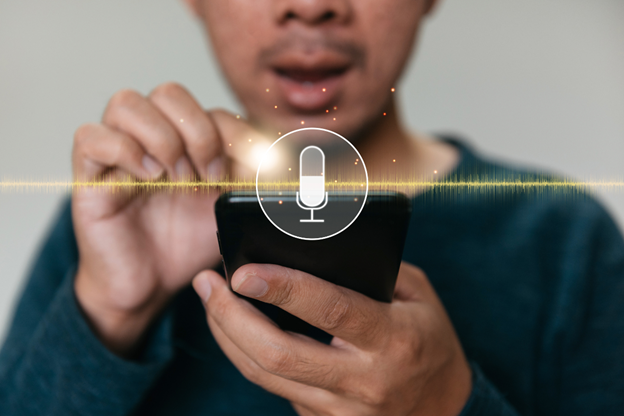How to say thank you in Swedish
written by: Krystof-Sandor Harfst
Table of Content
When learning a new language, knowing how to express gratitude is a crucial skill to have. It helps you establish connections with people and shows that you appreciate their efforts. Swedish is no exception. In this article, we'll take a closer look at how to say "thank you" in Swedish and provide some valuable tips to help you master this essential phrase.
Common Phrases for Saying Thank You in Swedish with audio examples
Swedish has several ways to say "thank you," depending on the context and the level of formality. Here are some common expressions:
Saying "Thank You" to Friends and Family
When expressing gratitude to friends and family members, it's common to use the basic phrase "tack." This expression is used in both formal and informal settings and is a versatile way to say thank you in Swedish.
Saying "Thank You" in a Formal Setting
If you're in a formal setting, such as a job interview or a business meeting, it's appropriate to use the phrase "tack så mycket," which translates to "thank you very much." This expression shows a higher level of formality and respect, which is appropriate for professional situations.
Saying "Thank You" for Help
If someone has helped you with a task, it's appropriate to say "tack för hjälpen," which means "thank you for your help." This expression shows appreciation for the effort and time the person put in to assist you.
Saying "Thank You" After a Meal
In Swedish culture, it's common to say "tack för maten" after finishing a meal to show appreciation for the food and the company. This expression is often used when dining with family and friends.
Saying "Thank You" for a Gift
If someone has given you a gift, it's appropriate to say "tack för presenten," which means "thank you for the gift." This expression shows gratitude for the thoughtfulness and effort the person put into selecting the gift.
Saying "Thank You" for an Invitation
If someone has invited you to an event or occasion, it's appropriate to say "tack för inbjudan," which means "thank you for the invitation." This expression shows appreciation for the person's thoughtfulness and consideration in including you in the event.
Saying "Thank You" for a Great Time
If you've had a great time with friends or family, it's appropriate to say "tack för en trevlig kväll/dag," which means "thank you for a pleasant evening/day." This expression shows appreciation for the time spent together and the enjoyable experience.
Saying "Thank You" for a Service
If you've received a service, such as help from a store employee or a taxi driver, it's appropriate to say "tack för hjälpen," which means "thank you for the help." This expression shows appreciation for the person's assistance and effort.
Saying "Thank You" for a Compliment
If someone has given you a compliment, it's appropriate to say "tack för komplimangen," which means "thank you for the compliment." This expression shows gratitude for the person's kind words and recognition.
Saying "Thank You" for Advice
If someone has given you advice, it's appropriate to say "tack för rådet," which means "thank you for the advice." This expression shows appreciation for the person's guidance and support.
Saying "Thank You" to a Teacher
If you want to express gratitude to a teacher, it's appropriate to say "tack för allt du har lärt mig," which means "thank you for everything you've taught me." This expression shows appreciation for the teacher's knowledge, effort, and dedication to teaching.
Saying "Thank You" for a Favor
If someone has done you a favor, it's appropriate to say "tack för tjänsten," which means "thank you for the favor." This expression shows gratitude for the person's help and support.
Saying "Thank You" to a Stranger
If a stranger has helped you with something, such as carrying your bags or giving you directions, it's appropriate to say "tack så mycket," which means "thank you very much." This expression shows appreciation for the person's kindness and generosity.
Saying "Thank You" for a Donation
If someone has made a donation to a cause or organization you're involved with, it's appropriate to say "tack för din donation," which means "thank you for your donation." This expression shows appreciation for the person's generosity and support.
Indirect ways to say thank you in Swedish
In addition to the direct ways to say "thank you" in Swedish, there are also indirect ways to express gratitude that can be used in different contexts. Here are some examples of indirect ways to say thank you in Swedish:
- "Det var jätte snällt av dig" - "It was really kind of you"
This expression is often used to express gratitude when someone has done something kind or helpful for you. It's an indirect way of saying "thank you" that focuses on the person's action rather than the gratitude itself. - "Jag uppskattar det verkligen" - "I really appreciate it"
This expression is another indirect way of expressing gratitude. It's often used in situations where someone has gone out of their way to help or support you, and you want to show your appreciation for their effort and dedication. - "Tack för att du finns" - "Thank you for being there"
This expression is a way of expressing gratitude for someone's presence and support in your life. It's often used in a sentimental or emotional context, such as when expressing appreciation for a close friend or family member. - "Det betyder mycket för mig" - "It means a lot to me"
This expression is often used when someone has done something that has a significant impact on you, such as offering support during a difficult time or providing valuable advice. It's an indirect way of expressing gratitude for the person's action and the positive impact it had on your life. - "Jag är tacksam för allt du har gjort" - "I am grateful for everything you have done"
This expression is an indirect way of expressing gratitude for someone's ongoing support and effort. It's often used to express appreciation for a person who has helped you over an extended period of time, such as a mentor or a family member.
Examples for answer to Thank you in Swedish
- Varsågod - This translates to "You're welcome" or "Here you go" in English.
- Ingen orsak - This means "No problem" or "No cause for concern."
- Det var så lite - This translates to "It was nothing" or "Not a big deal."
- Inte alls - This means "Not at all."
- Gärna - This translates to "Gladly" or "With pleasure."
- Tack själv - This means "Thank you too" or "Thanks to you as well."
- Du är välkommen - This translates to "You're welcome" or "You are welcome here."
- Det var så lite så - Similar to "It was nothing."
- Varsågod, det är du värd - This means "You're welcome, you deserve it."
Remember, these responses vary in terms of formality and context, so choose the one that best fits the situation and your relationship with the person you're communicating with.
Tips for Saying Thank You in Swedish
Practice Pronunciation
The Swedish language has a unique sound system, and mastering its pronunciation is crucial to sound authentic. Practice the basic phrases we mentioned earlier and pay attention to the vowel sounds, which can be quite different from English.
Use Appropriate Intonation
In Swedish, the intonation can change the meaning of a sentence. When expressing gratitude, use a rising tone to show enthusiasm and appreciation.
Consider the Context
In Swedish, the context plays a significant role in determining the appropriate way to say "thank you." If you're in a formal setting or speaking with someone older or in a position of authority, you should use a more formal expression, such as "tack så mycket."
Use Body Language
In addition to verbal communication, body language can also help convey gratitude. In Sweden, a smile and a nod of the head are common ways to show appreciation.
Practice, Practice, Practice
As with any new language skill, practice is essential. Find a language partner or tutor and practice saying "thank you" in various contexts until it becomes second nature.
If you ever want to travel to Sweden, make sure to visit scanditales.com
Learn how to say other words in Swedish



Topics
Popular Blog Posts
Free Language Course
Language learning apps
Online language learning
Intro
Discount preply
Cheap preply
Busuu
Busuu app
Is Busuu free
Free4Talk
Think In Italian
Babbel app
Is Babbel free?
Babbel cost
Babbel Spanish
Babbel vs. Rosetta Stone
Duolingo
Duolingo English test
How much is Duolingo plus
Rosetta Stone
Rosetta Stone languages
Rocket Languages



